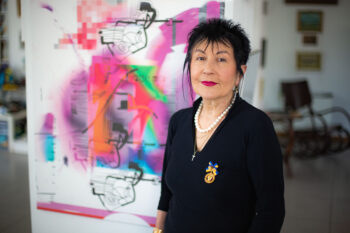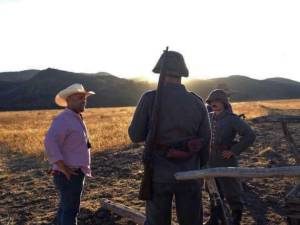By John Petrick
BERGEN, N.J. (Bergen Record) — Jon Milano is a true product of the melting pot called America — an Oradell native of Italian and Greek descent now living in California and making a movie about the Armenian genocide.
Director Jon Milano, a native of Oradell, talks on set with two actors in Turkish military uniforms.
It makes more sense than you might think.
“I am not Armenian,” Milano says, “but I grew up in Oradell, which has one of the biggest Armenian populations in America. When I was growing up, at first I had no idea that was the case. Then when I went to public school, all my friends were Armenian. They have such a great history behind them.”








